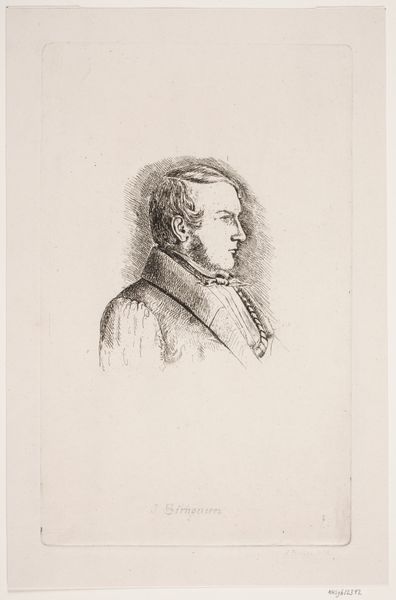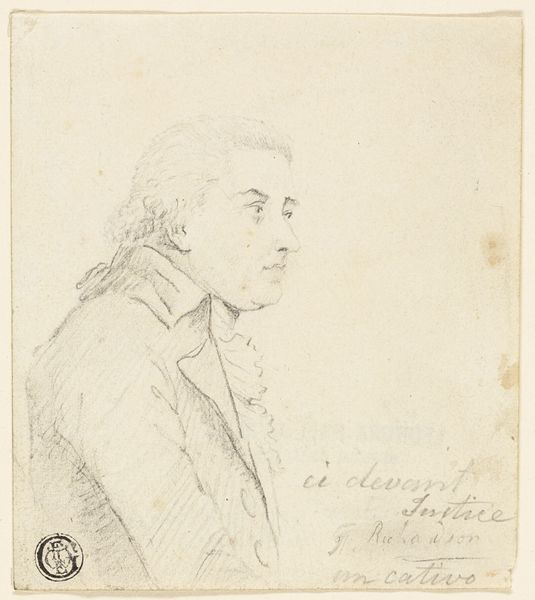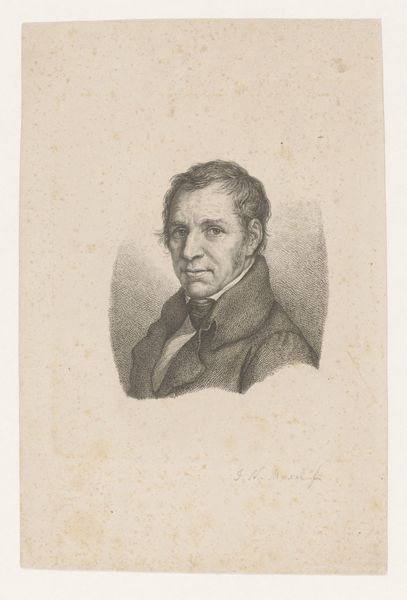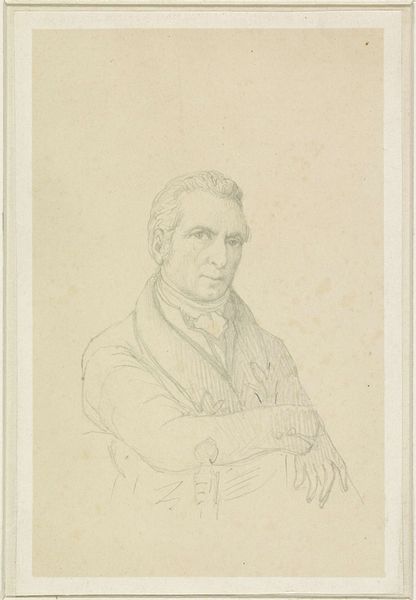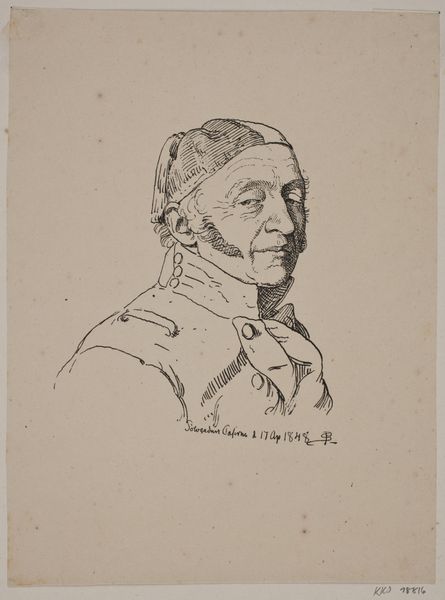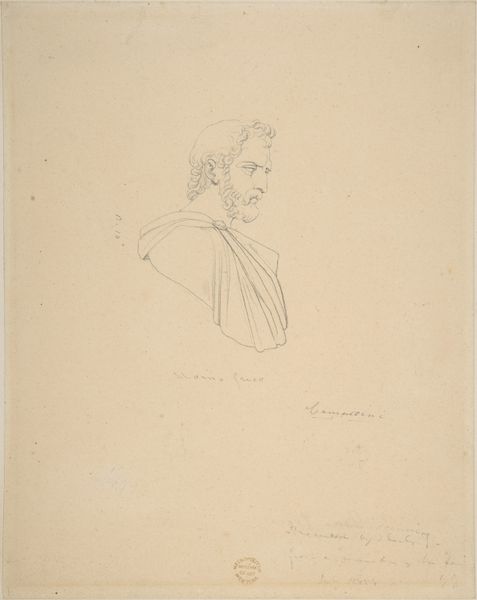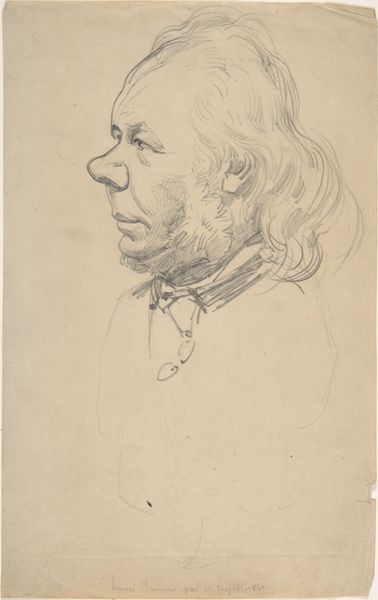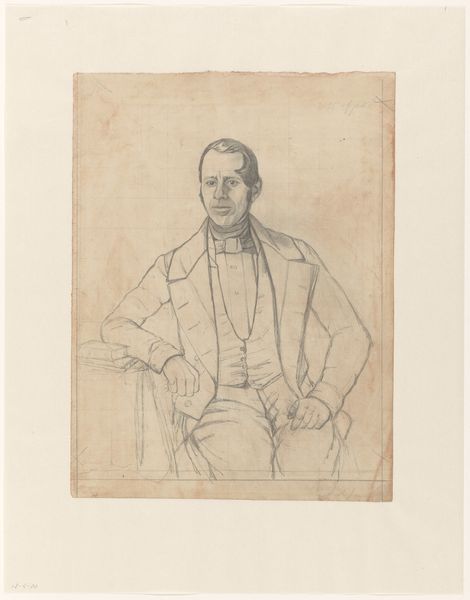
drawing, paper, pencil, chalk, graphite
#
portrait
#
drawing
#
paper
#
pencil drawing
#
pencil
#
chalk
#
graphite
#
portrait drawing
Copyright: Public Domain
Editor: This pencil and chalk drawing, titled "Bildnis des Friedrich Overbeck im Profil nach links," depicts a man in profile. It’s a delicate rendering and strikes me as reserved, almost stoic. What social and political contexts were in play when this drawing was made? Curator: I am drawn to the gendered performance presented. We must unpack the gaze inherent in portraiture, especially of men during this period. What norms of masculinity are being upheld, and what might be subverted? His refined features and perhaps affected hairstyle, considered with the context of the artist and subject being men in the 19th century could challenge what it means to be masculine during the era. Does the slight smile suggest internal confidence, a rejection of stoicism, or even a hint of subversion against the weight of patriarchal expectations? Editor: I didn't see it that way initially, I simply thought the stoic features aligned with the style of portraiture at that time. Could his aesthetic choices, such as hairstyle, be statements about artistic identity and resistance? Curator: Precisely. Think about how male artists use self-portraiture and portraiture of each other to build community but also make quiet statements about their beliefs. How does the drawing style—the softness of the pencil—influence our perception? Is this perhaps about softening masculine stereotypes, or simply aligning to fashionable sensibilities? How much is Schäffer doing here in capturing Overbeck? Editor: That’s fascinating. The softness you pointed out definitely gives the portrait a more subdued feel. I also find the simplicity intriguing; it focuses solely on Overbeck without any background distractions. Curator: That lack of context could suggest a focus on individual interiority, a move away from purely social representations, however subtle, of patriarchal status. This prompts questions regarding power dynamics in gender and portraiture. The intentional removal of props directs the focus directly onto the subject. Editor: Seeing it in that light gives the piece more nuance, a conversation about the role of art and its ability to engage with changing definitions of masculinity. Curator: Indeed, thinking about what is absent, what is left unsaid, what statements the artist might be making about gender constructs broadens our understanding. It allows us to engage with the art as more than a representation, but also an active dialogue in social change.
Comments
No comments
Be the first to comment and join the conversation on the ultimate creative platform.
